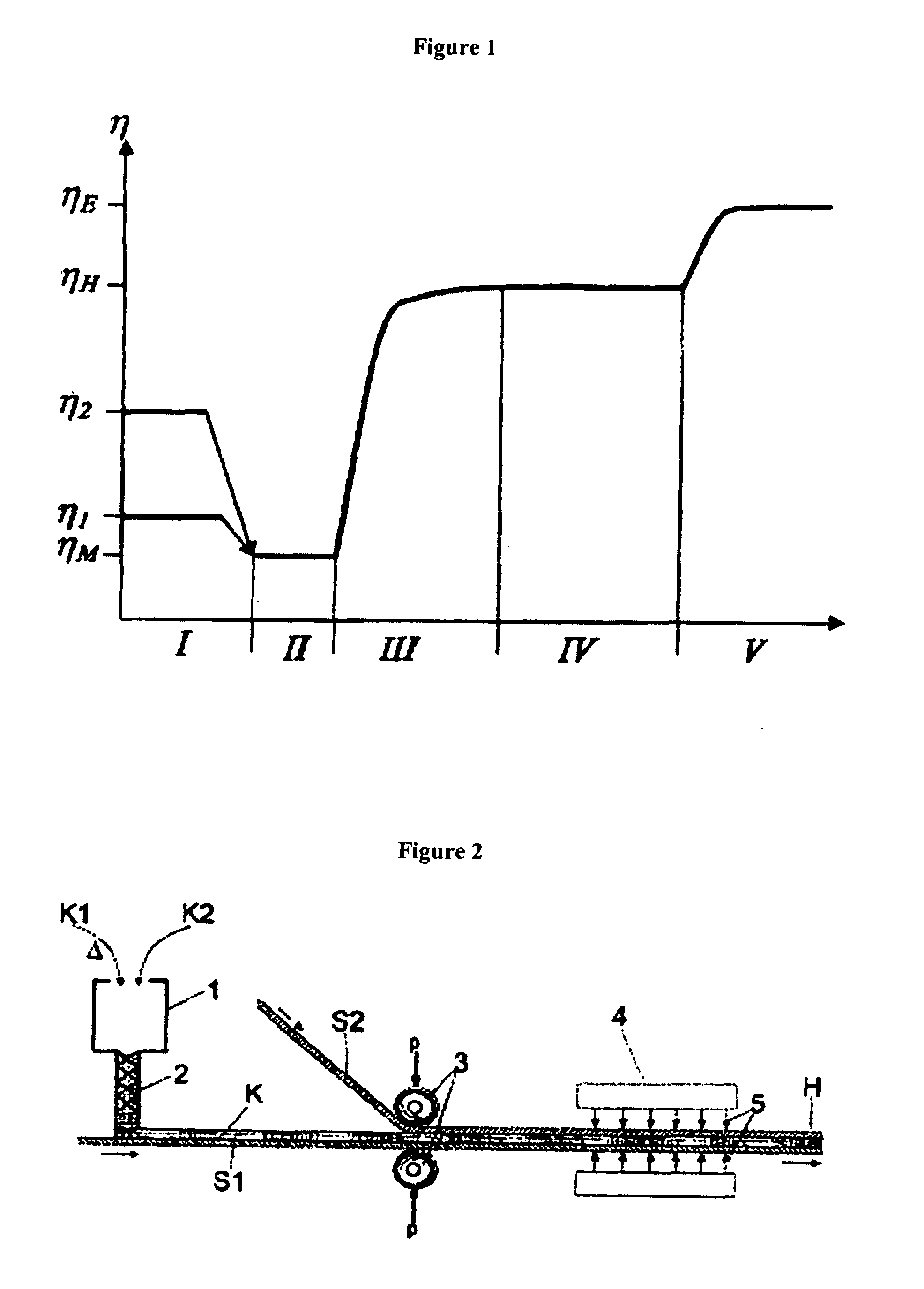Two-Component Adhesive for Fabrication of Semifinished Products and Sandwich Composites
a technology of sandwich composites and adhesives, applied in the direction of adhesive types, layered products, chemistry apparatus and processes, etc., can solve the problems of poor adhesion, inability to control the extent of partial crosslinking, and no longer possible or else only very poorly formed, etc., to achieve excellent final strength, increase strength, and high adhesion
- Summary
- Abstract
- Description
- Claims
- Application Information
AI Technical Summary
Benefits of technology
Problems solved by technology
Method used
Image
Examples
examples
[0122]A few examples are given below which illustrate the invention further but do not limit the scope of the invention in any way. The raw materials used in the examples are as follows:
TABLE 1Raw materials used.Raw materials usedSupplierDimerized C18 fatty acid (Pripol ™ 1013)UniquemaAdipic acidBASF2,2-Bis(4-hydroxyphenyl)propaneFluka AGBis(4-hydroxyphenyl)sulfoneFluka AGBisphenol A diglycidyl ether (= DGEBA)VanticoPolypropylene glycol diglycidyl ether (ED-506)Asahi-Denka KogyoPolypropylene ether polyol (Mw = 2000 g / mol)BayerDesmodur ® CDBayer4,4′-Diphenylmethylene diisocyanate (= MDI)BayerTriphenylphosphineFlukaCAB-O-SIL ® TS-720CabotDibutyltin dilaurate (DBTDL)FlukaDicyanodiamide (= Dicy)SKW TroisdorfCardolite ® NC-513CardanolCeramic hollow spheres / E-Spheres SL-125Osthoff-Petrasch
[0123]General preparation for preparing epoxy adduct B and its mixture with A (=A / B premix):
[0124]A / B Premix PM1
[0125]Under vacuum and with stirring at 110° C., 123.9 g of a dimeric fatty acid, 1.1 g tri...
PUM
| Property | Measurement | Unit |
|---|---|---|
| Temperature | aaaaa | aaaaa |
| Temperature | aaaaa | aaaaa |
| Temperature | aaaaa | aaaaa |
Abstract
Description
Claims
Application Information
 Login to View More
Login to View More - R&D
- Intellectual Property
- Life Sciences
- Materials
- Tech Scout
- Unparalleled Data Quality
- Higher Quality Content
- 60% Fewer Hallucinations
Browse by: Latest US Patents, China's latest patents, Technical Efficacy Thesaurus, Application Domain, Technology Topic, Popular Technical Reports.
© 2025 PatSnap. All rights reserved.Legal|Privacy policy|Modern Slavery Act Transparency Statement|Sitemap|About US| Contact US: help@patsnap.com



